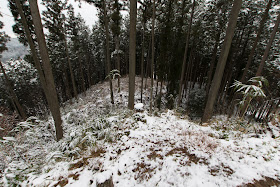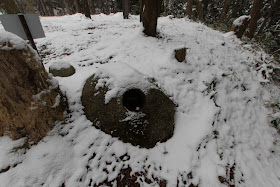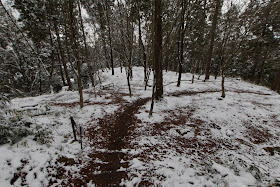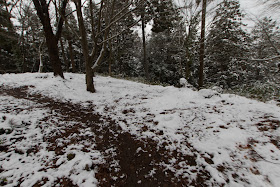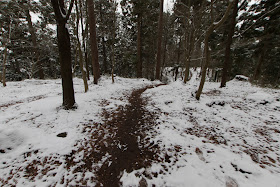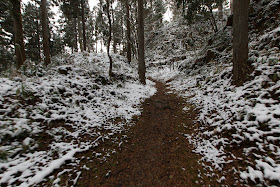Akechi Castle
-Cavalry VS matchlock gunner (1) massive offence of young successor-
Overview
Alias: Shirataka-jo (Shirataka castle)
Place: Akechi-cho Ena city, Gifu
Type: Hill Castle
Built: 1247
Remaining remnants: Clay walls and dry moats
Title:
Brief History
Akechi castle (明知城), also called as Shirataka castle (白鷹城), is located over the hill of about 70 meter height from hillside at the east of current Akechi town. Akechi town is the one at the southeast edge of current Gifu prefecture, and is known for traditional buildings constructed around 1900 when the town prospered by sericulture and silk reeling.
Akechi town is only 10 kilometer apart from Iwamura town that is famous for Iwamura castle (Gifu prefecture). But Akechi town belongs to Yahagi-gawa river area is connected to middle part of current Aichi prefecture, contrary to Iwamura town that is close to east part of Aichi prefecture and south part of Nagano prefecture. Because of this geographical condition both of Akechi castle and Iwamura castle became the target of struggle.
Origin of Akechi castle and Akechi Toyama clan
Akechi castle was built in 1247 by local lord Akechi Toyama clan. Akechi Toyama clan was a branch family of Toyama clan which became the lord of Iwamura castle at the beginning of Kamakura era. Akechi Toyama clan separated from early period and regarded as three major families of Toyama clan along with main family Iwamura Toyama clan and Naegi Toyama clan at Naegi castle (Gifu prefecture).
Toyama clan survived not included in large battles by 15th century, but in the middle of 16th century Shingen Takeda (1521-1573), the warlord of Kai province (Yamanashi prefecture), captured south part of Shinano province next to the territory of Toyama clan by 1550. Facing the pressure of Takeda clan, Toyama clan once subordinated to Takeda clan.
Between Takeda clan and Oda clan
But soon after that Nobunaga Oda (1534-1582), the warlord of Owari province (west half of Aichi prefecture) who broke Imagawa clan at the battle of Okehazama in 1560 grew as a warlord. Nobunaga expanded into middle part of Mino province (Gifu prefecture) and allied with Ieyasu Tokugawa (1543-1616), the warlord of Mikawa province (east half of Aichi prefecture), then westward of Toyama clan faced Oda territories.
Facing this situation, Toyama clan subordinated to both of Takeda clan and Oda clan. Once Takeda army and Oda army fought at Mino province in 1565 but both clan allied, then Katsuyori Takeda (1546-1582), the successor of Shingen Takeda, married with adopted daughter of Nobunaga. Toyama clan organized this alliance to keep their security, but among the tension castles of Toyama clan including Akechi castle might be improved at this time.
Structure of Akechi castle
Akechi castle spreads over the curved ridge of the hill like “J” letter. Core area of the castle spreads at the lower half of “J” letter and includes central area, secondary area and third area, Central area is a oblong shaped one of about 40 meter long and 20 meter width at the peak of the hill, and secondary area is a 20 meter long square shaped one just at below of central area.
Opposite of saddle point, outer area that is about 30 meter long square shaped one exists. This area is protected by sheer wall and has clear entrance, thus there might be a residence of important retainer. Surrounding these core areas, many vertical dry moats are built on the slope to prevent the climb of enemy soldiers, rarely seen at castles of Aichi prefecture and Gifu prefecture.
At the upper half of “J” letter, there is a climbing road from the town and front side forts to protect this climbing road. At the tip of the hill, there is a wide flat space which might be originally used as hillside residence and later turned to Akechi Jinya castle after abolition of Akechi castle. Total size of the castle is 400 meter long and 200 meter wide, and even though not having stone walls the size is equivalent to Iwamura castle or Naegi castle.
Westward operation and death of Shingen Takeda
However in 1570, Shingen Takeda who completed the capture of Suruga province (middle part of Shizuoka prefecture) turned their army to westward and broke with Nobunaga and Ieyasu. At that year Torashige Akiyama (1527-1575), the commander of Takeda army at south part of Shinano province, intruded into Mino province.
Respond to this, Akechi Toyama clan and Naegi Toyama clan intercepted Takeda army at the border but suffered severe defeat, then Akechi Toyama clan lost their leader at this battle. Further in 1572, Torashige Akiyama attacked Iwamura castle which just lost their leader Kageto Toyama (?-1572) and fell it, then married with Lady Otsuya (?-1575) who was the aunt of Nobunaga and wife of Kageto Toyama.
In the winter of 1572, Shingen started his last operation toward Oda clan and Tokugawa clan, then thoroughly broke Tokugawa army at the battle of Mikatagahara. But next year Shingen died in ill on the way of operation, then Takeda army had to return to Kai province without remarkable result. Katsuyori Takeda succeeded the leader of Takeda clan as planned.
Struggle of young successor
However, Katsuyori Takeda was a son of the daughter of Suwa clan which was extinguished by Takeda clan, and once succeeded Suwa clan before the death of Yoshibobu Takeda (1538-1567), the formal son of Shingen.
Based on the will of Shingen, Katsuyori was placed as the deputy leader of Takeda clan until the succession of Nobukatsu Takeda (1567-1582), the son of Katsuyori Takeda, and his authority was quite weak.
Katsuyori concealed the death of Shingen, but Nobunaga and Ieyasu knew the death of Shingen and started their counter attack. Nobunaga expelled hostile Shogun Yoshiaki Ashikaga (1537-1597), and ruined Asakura clan and Azai clan which suffered Nobunaga. Ieyasu also attacked castles of Takeda clan at Mikawa province and Totomi province (west part of Shizuoka prefecture).
Massive attack of Katsuyori Takeda and fall of Akechi castle
Shingen told Katsuyori to conceal the death of Shingen three years and cease military operation at that period, but circumstance could not allow this will. To cope with the counter attack of Nobunaga and Ieyasu, and enhance his authority, Katsuyori started massive offence to Oda clan and Tokugawa clan in 1574.
In the beginning of 1574, Takeda army intruded into the border of Mino province and Mikawa province, and captured 18 castles including Akechi castle or Asuke castle (Aichi prefecture). Nobunaga tried to send reinforce army to Akechi castle, but before arrival one commander of Akechi castle turned to Takeda army and opened the gate then Akechi castle fell.
As Akechi town is connected to the Owari province or middle part of Mikawa province, the original territory of Tokugawa clan and Oda clan, the fall of Akechi castle was a strong pressure to both clans. Nobunaga started to improvement of Ori castle (Gifu prefecture) which was at the middle of Akechi castle and his main base Gifu castle (Gifu prefecture). Ieyasu also reformed castles at current Toyota city to stop the further intrusion of Takeda army.
Peak and decline of Takeda clan
Next in June Katsuyori himself lead large army and attacked Takatenjin castle (Shizuoka prefecture) formerly Shingen Takeda attacked but could not fall. Same as Akechi castle Nobunaga sent reinforcement army, but again before arrival of reinforcement army the commander opened the castle to Takeda clan.
By continuous capture of castles Katsuyori Takeda improved his authority as a leader of Takeda clan. At that time Nobunaga Oda and Kenshin Nesugi (1530-1578) who was the fatal rival of Shingen Takeda allied, and the both highly evaluated the braveness of Katsuyori. Katsuyori who stabilized his situation went ahead to total confrontation against Oda clan and Tokugawa clan that his father could not realize.
After the complete victory at the battle of Nagashino in 1575, Oda army and Tokugawa army attacked remaining castles of Takeda clan at Mino province and Mikawa province. Iwamura castle fell before siege of Oda army then Torashige Akiyama and Lady Otsuya were executed, and Akechi castle became bake to Akechi Toyama clan.
Afterward of castle
After the death of Nobunaga in the incident of Honnoji in 1582, Akechi Toyama clan was suppressed by Mori clan at Kaneyama castle (Gifu prefecture) then once left Akechi castle and followed to Ieyasu Tokugawa. In 1600 Mori clan moved to Shinano province then Tamaru clan was appointed as the lord of Iwamura castle and Akechi castle, but at the battle of Sekigahara in that year Akechi Toyama army attacked Akechi castle and recovered it.
Due to this achievement Akechi Toyama clan became the retainer of Edo Shogunate, but as they did not have qualification to have castle Akechi castle was abolished different from Iwamura castle and Naegi castle renovated into modern castles.
Akechi Toyama clan governed Akechi area by the end of Edo era, and Kagemoto Toyama (1793-1855) who was the administrative and judicial officer and became the tale of brilliant judge “Toyama no Kinsan” related to Akechi Toyama clan.
Now no building is left but structure of the castle well remain over the hill. As the hill is not so high and round sightseeing route is prepared, the structure of the castle consists of sheer wall and dry moats are easily grasped. Iwamura castle and Naegi castle might be visited at the same time due to closeness, and Akechi castle is not so famous as these two castles but valuable to be added to the course.
Access
15 minutes walk from Akechi-Tetsudo Akechi-sen line Akechi station. 30 minutes drive from Chuo Jidoshado Expressway Ena interchange to parking at backside of castle.

















































































































































